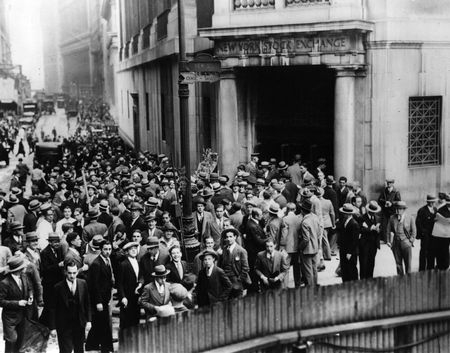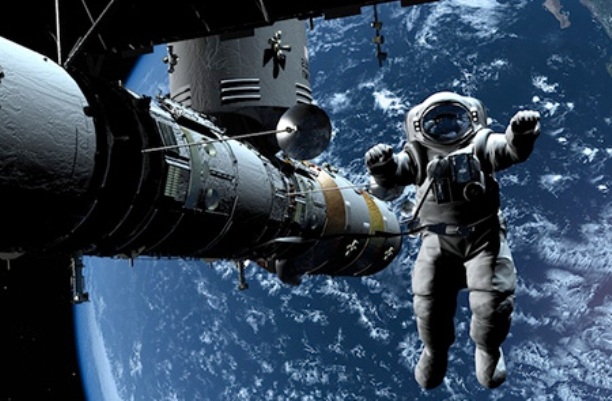The Depression of 1929-39
Wednesday - November 14, 2018 10:24 am ,
Category : Fun Facts

America’s booming economy of the 1920’s helped finance the recovery of war-torn Europe. But the boom came to an end in late 1929 with the crash of the stock market, a disaster that sent shock waves around the world.
On “Black Thursday” October 24 1929, shareholders panicked and began unloading at any price. By month’s end stocks had lost nearly half their value since early September. Stunned by the crash, consumers cut back, causing businesses to slash production and lay off workers. The number of Americans unemployed rose to 5 million in 1930 and 13 million a year later.
By 1932, people were losing trust in banks and stashing money away at home. That November, Republican incumbent Herbert Hoover lost the presidential election to Democrat Franklin Roosevelt, who promised “a new deal for Americans”. Roosevelt stabilized the banking system and sought to promote economic recovery by creating agencies such as the Civilian Conservation Corps. His new deal did not end the great depression, but it avoided the political upheaval seen in other nations.
The crash on Wall Street destabilized Germany as nervous American investors demanded repayment of loan. Unemployment doubled there between 1929 and 1930. And the Communist party and Adolf Hitler’s Nations socialist (Nazi) party made big gains in the nation’s legislature Blaming Germany’s woes on communist and Jews. Hitler rose to power through the electoral process and then claimed emergency powers in 1933. He drew lessons from Italy’s Benito Mussolini and sought to revive Germany by building a new empire he called the Third Reich. France and Britain, fearful of renewed war allowed Hitler to defy the Versailles Treaty in 1936 and reoccupy the Rhineland.
Soviet dictator Joseph Stalin tried to strengthen his regime by launching a brutal Five-year plan in 1929 aimed at collectivizing agriculture and spurring industrialization. To eliminate opposition, he carried out ruinous purges in the 1930s in which millions of peoples were executed or sent to labor camps.
During the Spanish Civil War, which began in 1936, Stalin gave military aid to Republicans fighting Nationalists led by Gen. Francisco Franco, who prevailed with support from Hitler and Mussolini. This coincided with strife in Asia as economic turmoil in Japan weakened the constitutional government there and increased the clout of military leaders, who favored imperial expansion. In 1937, Japanese forces invaded China, offering a grim preview of the global struggle to come.
-Window To News
On “Black Thursday” October 24 1929, shareholders panicked and began unloading at any price. By month’s end stocks had lost nearly half their value since early September. Stunned by the crash, consumers cut back, causing businesses to slash production and lay off workers. The number of Americans unemployed rose to 5 million in 1930 and 13 million a year later.
By 1932, people were losing trust in banks and stashing money away at home. That November, Republican incumbent Herbert Hoover lost the presidential election to Democrat Franklin Roosevelt, who promised “a new deal for Americans”. Roosevelt stabilized the banking system and sought to promote economic recovery by creating agencies such as the Civilian Conservation Corps. His new deal did not end the great depression, but it avoided the political upheaval seen in other nations.
The crash on Wall Street destabilized Germany as nervous American investors demanded repayment of loan. Unemployment doubled there between 1929 and 1930. And the Communist party and Adolf Hitler’s Nations socialist (Nazi) party made big gains in the nation’s legislature Blaming Germany’s woes on communist and Jews. Hitler rose to power through the electoral process and then claimed emergency powers in 1933. He drew lessons from Italy’s Benito Mussolini and sought to revive Germany by building a new empire he called the Third Reich. France and Britain, fearful of renewed war allowed Hitler to defy the Versailles Treaty in 1936 and reoccupy the Rhineland.
Soviet dictator Joseph Stalin tried to strengthen his regime by launching a brutal Five-year plan in 1929 aimed at collectivizing agriculture and spurring industrialization. To eliminate opposition, he carried out ruinous purges in the 1930s in which millions of peoples were executed or sent to labor camps.
During the Spanish Civil War, which began in 1936, Stalin gave military aid to Republicans fighting Nationalists led by Gen. Francisco Franco, who prevailed with support from Hitler and Mussolini. This coincided with strife in Asia as economic turmoil in Japan weakened the constitutional government there and increased the clout of military leaders, who favored imperial expansion. In 1937, Japanese forces invaded China, offering a grim preview of the global struggle to come.
-Window To News



